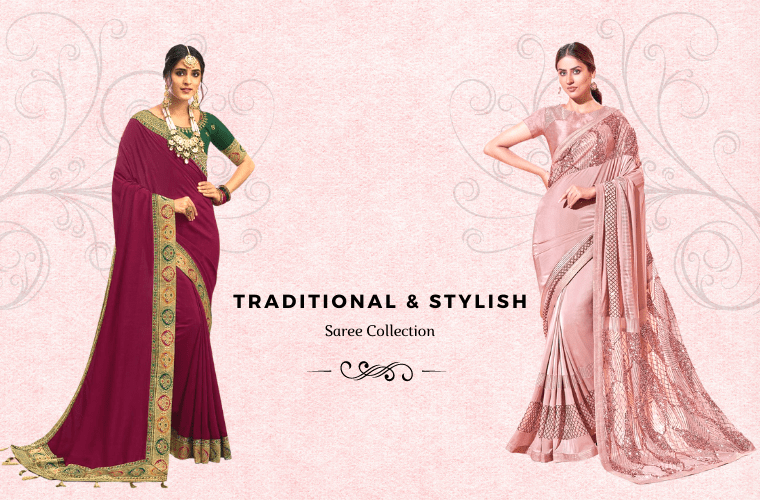The Indian Saree, which has been around for almost 5,000 years, is believed to be one of the world’s oldest forms of clothing still in use. On ramps at leading fashion shows, in Bollywood, on streets of rural and urban India, on college students and their conservative grandmothers- the saree is as deeply engrained in our culture as it has ever been. The saree has evolved to be the most suited dress for Indian ladies due to its ability to be warm in winter, and cool in summer, as well as it’s professional and aesthetically stylish appearance. It is for this reason that politicians and farm workers equally wear it. There are pleatless Bengali and Odia styles, a back-to-front Kodagu style saree, a two-piece Malayali version, and so on. There are significant variations depending on the type of fabric used, and the weaving methods utilized. As a result, there are the tie-dye Bandhni sarees, Chanderi cotton sarees, and a wide range of silk sarees, including Mysore and Kanchipuram sarees.
To list a few Traditional sarees here comes;
Maharashtra’s Nauvari saree is a wholly distinct way of a draping a saree. It is worn like a dhoti, with one end going front to back between the legs, which is then tucked around the waist and the upper part is draped like a casual saree. This Nauvari saree is best demonstrated by Maharashtra’s folk dance, lavani.
Then there’s the Banarasi saree, which is considered one of India’s finest sarees. These sarees are crafted with finely woven silk and Zari and are decorated with elaborate engravings. These sarees are relatively heavy due to the engravings. Banarasi sarees are typically worn by Indian women on special occasions like weddings, and are meant to be paired with the woman’s best jewelry, ideally gold. Indeed, wedding/engagement and Banarasi sarees go hand in hand. Because of the rich texture of a Banarasi saree, any woman who wears it looks absolutely stunning. You’ve probably never heard of Bandhni, Shalu or Tanchoi sarees. Bandhni is another type of multicolored saree that is popular in Rajasthan and Gujarat. Bandhni work involves tying and dyeing of pieces of cotton or silk cloth, with natural hues such as yellow, red, green and black being the most common. Bandhni produces a multitude of symbols including dots, squares, waves and strips, after processing. The Bandhni work is exclusively carried out by Muslim Khatri Community of Kutchh. Traditionally, these are classified as “Khombi”, “Ghar Chola”, “Patori”, “Chandrokhani”, and so on. Bandhni is highly fashionable these days, not just among ladies but even among males. Jamnagar is city in Gujarat that is well-known for its Bandhni craftsmanship.
Last but not the least comes, Shalu and Tanchoi Sarees. Varanasi produces a unique style of saree known as Shalu. It is usually a soft textured saree worn by the women as casual wear. Tanchoi is another light silk-based saree found here, these are generally light in weight and have Zari. These sarees are popular among women since they are reasonably priced.

